When you think of wild horses, you might picture Mustangs galloping across the plains of the West, or Chincoteague Ponies like Misty roaming free on an island, but these are actually “feral” equines. Feral animals are those in the wild who are descended from domestic animals.
Truly wild equines—wild relatives of the domestic horse—include only the Przewalski’s horse, three species of zebra, and a few wild donkey species from Africa and Asia. Most of these are endangered in their native lands due to habitat loss, war and hunting.
Przewalski’s horse
Considered the only true living wild horse, the Przewalski’s Horse (pronounced shoo-VALL-skee), or Equus ferus przewalskii, is a native of the grasslands of Central Asia. They were first described by Polish explorer R. M. Przewalski and are named after him. Przewalski’s horses are also called “takhi” in their homeland, which means “spirit” in Mongolian. Distant cousins of domestic horses, genetic evidence suggests that the two share a common ancestor 500,000 years ago.
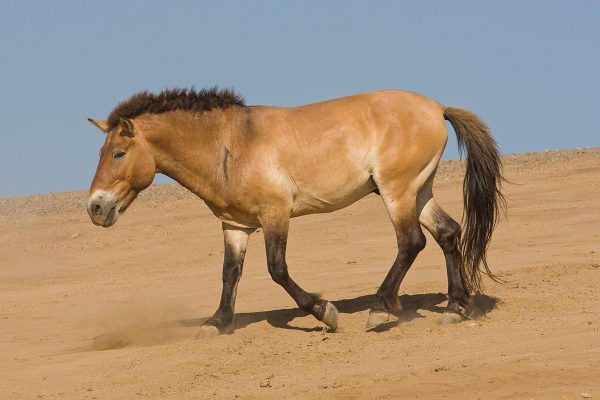
Przewalski’s horses became extinct in the wild by the 1980s but have been bred in captivity since the early 1970s. Beginning in the 1990s, a few have been reintroduced to their native lands. Today, the world population (in zoos and the wild) is estimated at around 2,000 animals, but they are still considered “endangered” by the International Union for the Conservation of Nature (IUCN) on their Red List of Threatened Species.
According to Steve Meltzer, curator of mammals at the San Diego Zoo Safari Park, Przewalski’s horses are shorter and stockier than domestic horses, and they have a beige to reddish-brown coat and a short, upright mane, and occasional faint stripes on their legs. They typically don’t weigh more than 700 pounds.
At one time there was another wild horse subspecies, the tarpan, or Eurasian wild horse (Equus ferus ferus), but sadly the last tarpan died in captivity in Russia in 1909, so they are now extinct.
Zebras
Zebras are more closely related to wild and domestic donkeys than horses. There are three species of zebra, all of which live in Africa.
GRÉVY’S ZEBRA: The Grévy’s zebra (Equus grevyi) is the largest in size, weighing from 750 to 1,000 pounds. Named after French President Jules Grévy, who received one as a gift from African royalty, they are found in Kenya and Ethiopia. According to the Smithsonian, Grévy’s have experienced one of the greatest loss of range (areas where they live) of any African mammal.
“With fewer than 2,200 animals in wild habitat, they are listed as ‘endangered’ by the IUCN,” says Meltzer. “Their numbers have declined sharply in recent decades due to habitat loss, which is the result of human activities.”
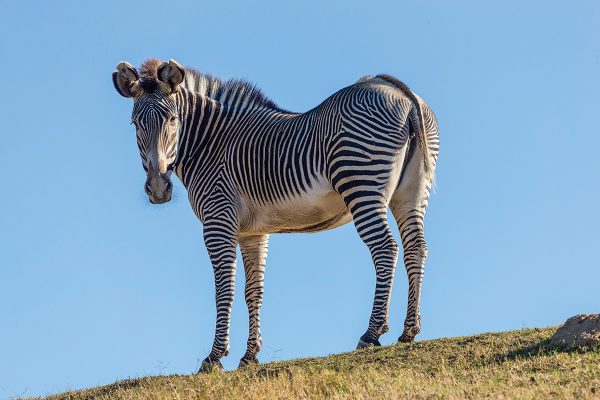
Meltzer describes them as having a long neck and head; large, rounded fuzzy ears; a brown muzzle; white belly, and very narrow black stripes compared to other zebra species.
PLAINS ZEBRA: The Plains zebra (Equus quagga) is the second-largest zebra species and is native to eastern and southern Africa. They generally weigh between 400 and 700 pounds. They are also the most numerous in the wild, with over 650,000 estimated. However, they are still listed as “near threatened” by the IUCN since their numbers are declining.
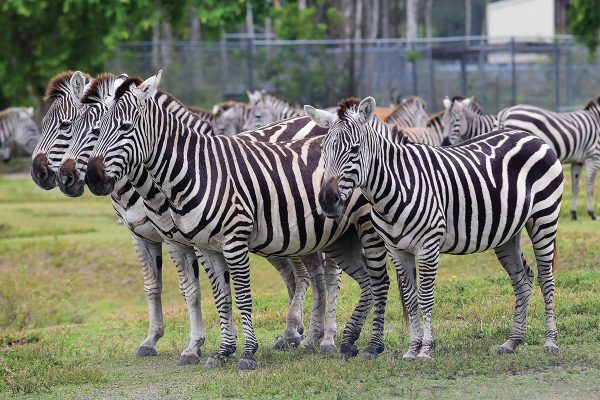
The stripes of a Plains zebra tend to be thicker than in the other two species, and the stripes extend under their belly. There are seven subspecies of Plains zebra: Burchell’s; Chapman’s; Crawshay’s; Grant’s (around 75% of the Plains zebras are Grant’s); Maneless; Selous’, and the now extinct Quagga.
MOUNTAIN ZEBRA: The Mountain zebra (Equus zebra) is the smallest of the three species and weighs between 450 to 820 pounds. As their name suggests, Mountain zebra live in rocky, hilly terrain up to 6,600 feet above sea level, although they can also range into forests and grasslands.
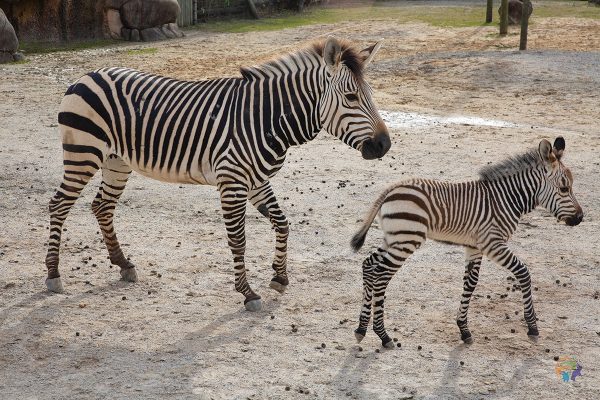
One feature unique to Mountain zebra is the dewlap (pouch of skin) that hangs from their lower neckline. They also have a white belly and horizontal stripes on their rump and at the base of their tail.
The two subspecies of Mountain zebra are the Cape found in South Africa and the Hartmann’s found in Angola and Namibia. These are listed by the IUCN as “vulnerable.” Near extinction in the 1930s, there about 2,500 Capes in the wild today. According to Zoo Knoxville’s Grasslands Curator Petty Grieve, there are only about 8,300 Hartmann’s currently roaming Africa.
Wild Donkeys
The final type of wild equines are the wild donkeys of Africa and Asia. Domestic donkeys in the Americas and Europe are thought to be descended from African donkeys.
The scientific name for the African wild donkey is Equus africanus. The ICUN classifies the three subspecies from Africa as follows: the Somali wild donkey as “critically endangered”; the Nubian wild donkey as “possibly extinct,” and the Atlas wild donkey as “extinct.”
There are also two Asian wild donkey species. The first is the Asiatic wild donkey (Equus hemionus), which are also called onagers. This group includes five subspecies.
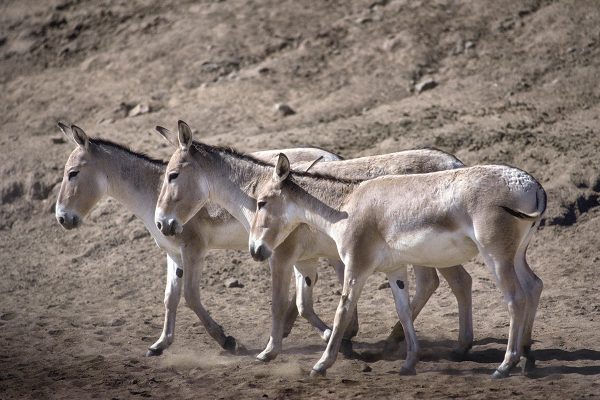
The second species of Asiatic wild donkey is the kiang, or the Tibetan wild donkey (Equus kiang), which has four regional subspecies. They range over areas in Tibet, Nepal and parts of India.
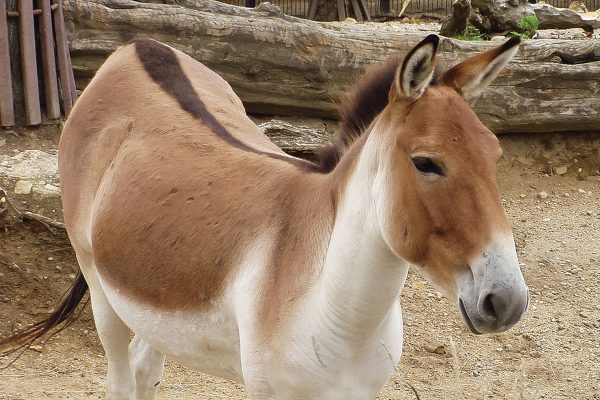
Most of the wild donkeys are “endangered” or “critically endangered,” according to the IUCN. The exception is the kiang, which is estimated to have higher numbers in the wild and is listed as a species of “least concern.”
All of the wild donkey species are characterized by long ears and a lean, straight-backed build, and lack defined withers. Many have a dark dorsal stripe running down their topline through the base of the mane to the tailhead, and some have stripes on their legs as well.
Wild donkeys have a reputation for considerable toughness and can survive in harsh desert, high plains and mountainous terrain. They graze grasses, browse trees and bushes, and even eat bark, fruits and seed pods, depending on what plant materials are available.
Conservation
The San Diego facility still houses a herd of 11 Somali wild donkeys.
“With fewer than 700 individuals left in wild habitat, spread out in small isolated populations … we work closely with other AZA [Association of Zoos and Aquariums] members to ensure that we maintain a genetically healthy population in zoos as a hedge against extinction,” says Meltzer.
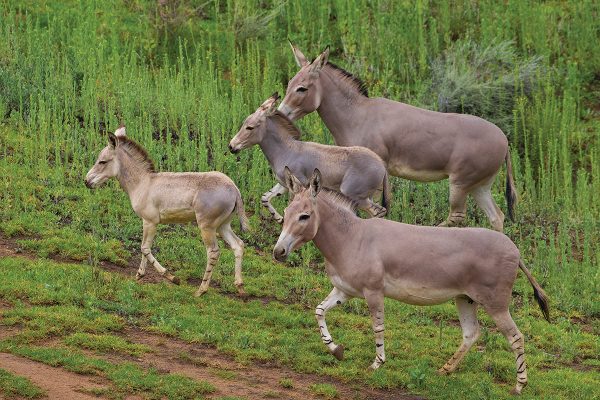
Why should you care about wild equines when you have your favorite domestic variety already at home? Zoo Knoxville grasslands keeper Emily Mack says animal lovers would miss out on experiencing some fascinating creatures in these wild relatives of the horse.
“Wild equids are the amazing cousins of the domestic horses that we all love so much. [For example,] Zebras play an important role in the ecosystem by eating the tops of the grasses so that other animals can get to the shorter parts of the grass. We should conserve these animals because the world would be much less wonderful without them.”
This article about wild relatives of the horse appeared in the Winter 2022 issue of Young Rider magazine. Click here to subscribe!


